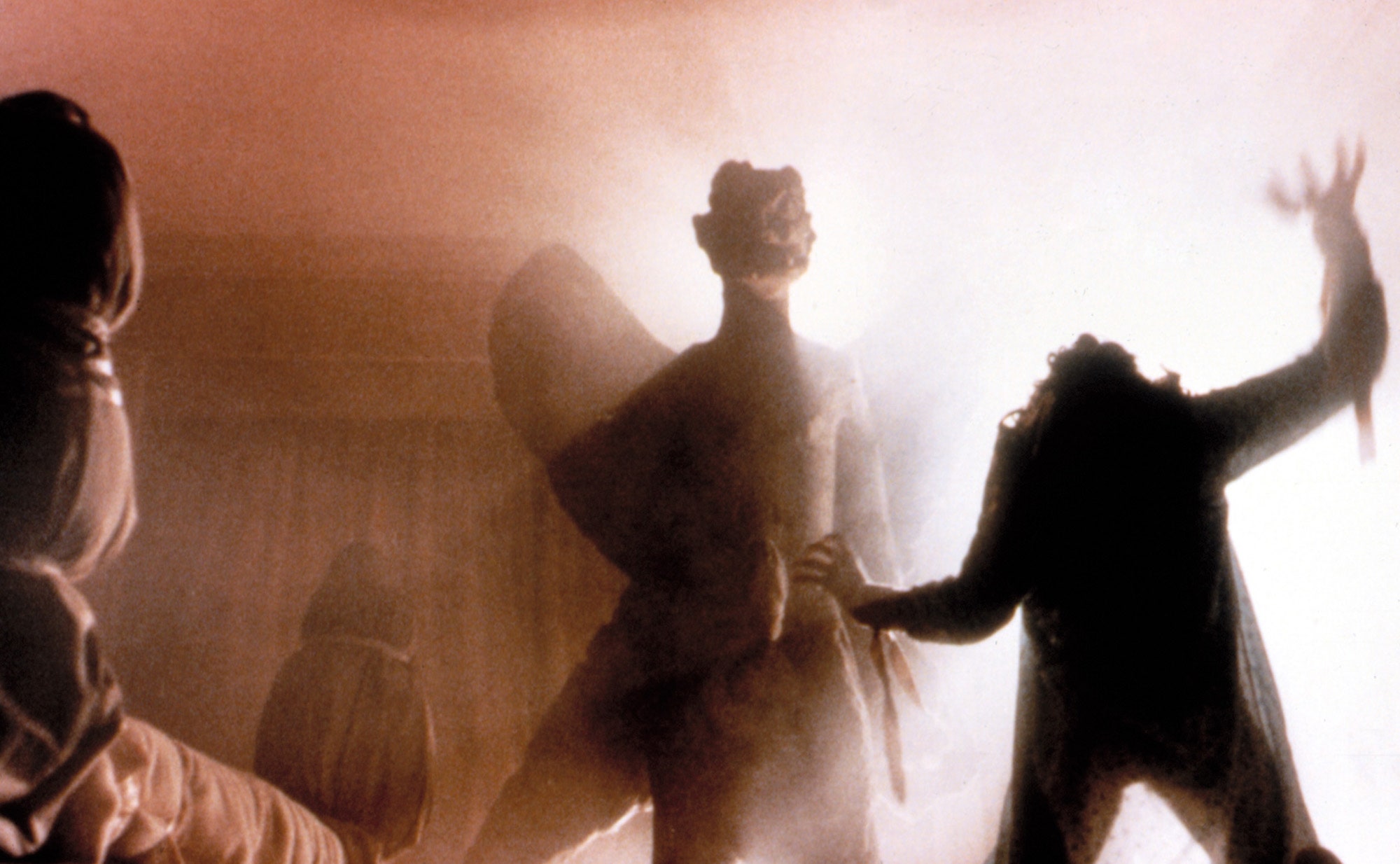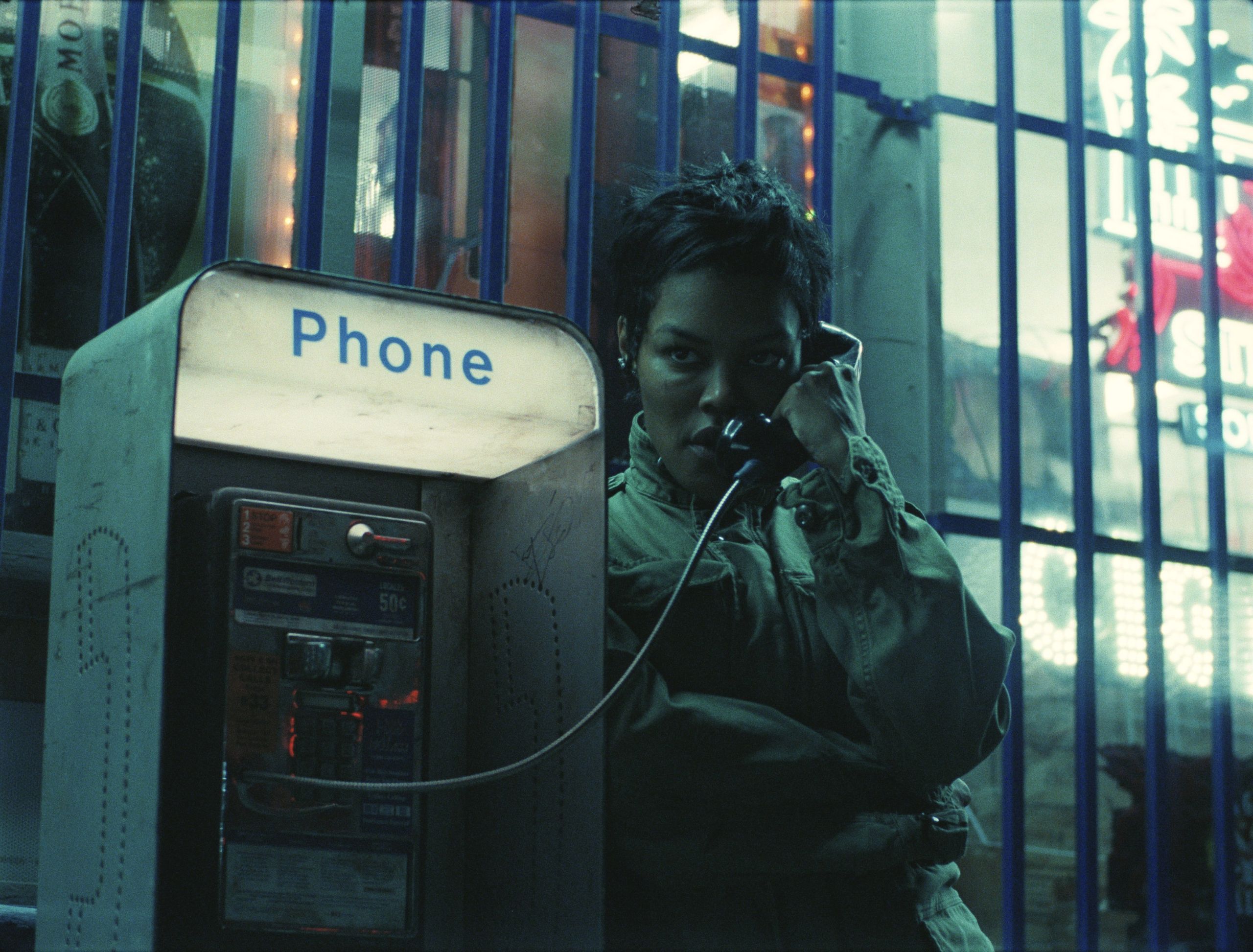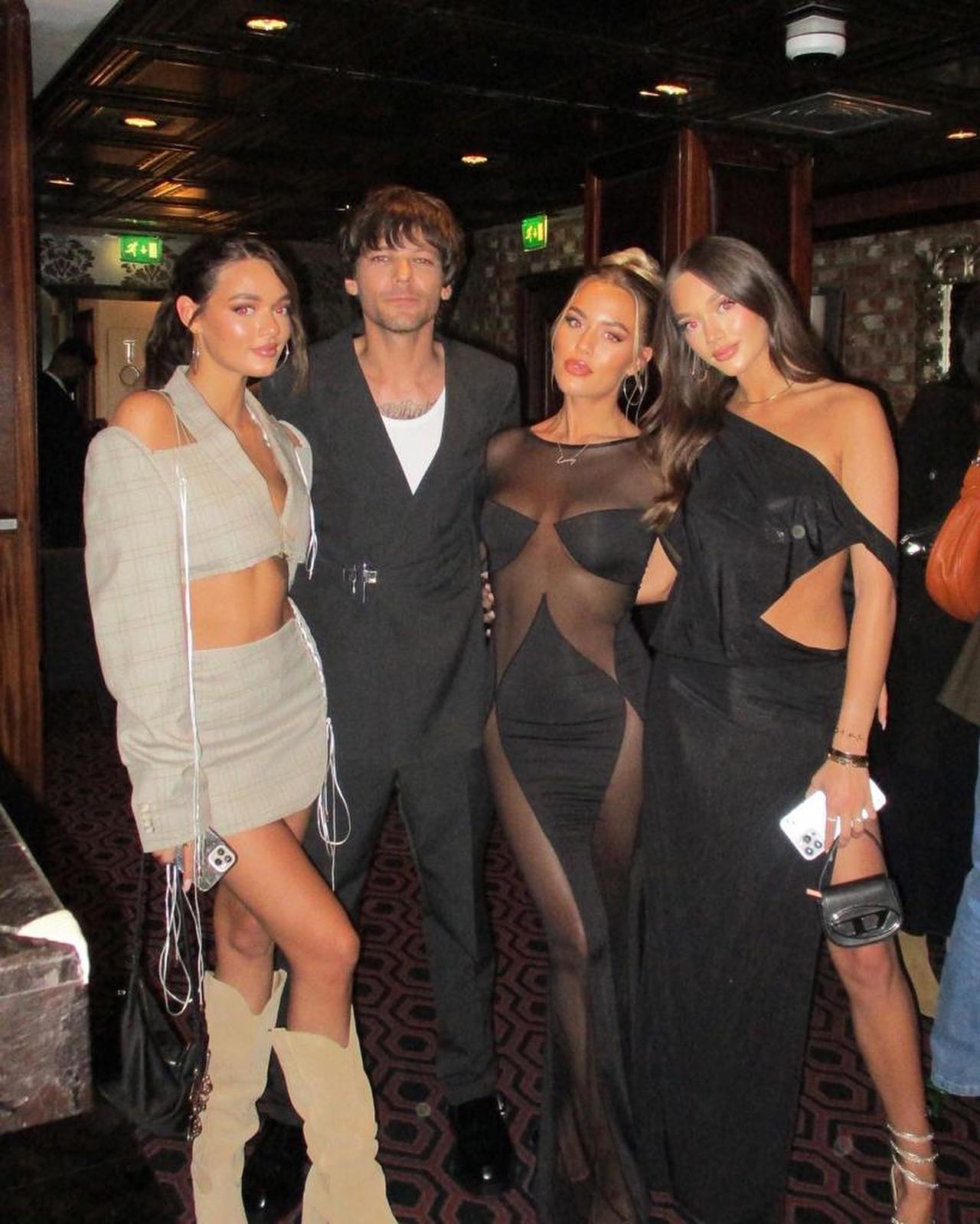Unveiling the Hidden Demon in 'The Exorcist': Fact or Fiction | Vanity Fair

Article by Anthony Breznican
During my high school days in the early 1990s, my friends and I decided to examine the movie The Exorcist frame by frame. This was part of a class project we were working on, which centered around the history of subliminal messages in media.
Our exploration took us to the depths of supposed hidden messaging in the Beatles' song "Strawberry Fields Forever." We managed to isolate the part at the song's conclusion where a distorted voice was believed to be saying, "I buried Paul." This phrase fuelled conspiracy theories in the previous generation about the alleged death of Paul McCartney, in 1966. We also got our hands on a book written in 1973 by Wilson Bryan Key, known as Subliminal Seduction, which detailed the use of covert messages as marketing tools. We found ourselves trying hard to locate the nude figures embedded within the ice cubes of old liquor advertisements, as suggested by the author.
Adding to our investigations, we rented a copy of The Exorcist from the local video store, a movie rumored to be laced with subliminal imagery designed to unsettle its viewers unnervingly. We used the primitive technology available to us to examine the 1973 horror film frame by frame, or as closely as we could.
In the movie, there is a scene where the character Father Karras, depicted by Jason Miller, sees his deceased mother in a dream descending into a subway station with a distressed look on her face. As Catholic school students, we interpreted this as symbolism for entering hell. We noticed a sudden flash of a disquieting face with a grotesque grin and bloodshot eyes, lasting just a fraction of a second, barely noticeable but still absolutely unsettling.
This face appears for only a few frames, hardly long enough for anyone to fully understand what it represents. However, this brief appearance might have been sufficient to sow seeds of fear amongst audiences back in 1973. We considered this as evidence of subliminal communication in The Exorcist.
Despite the disturbing nature of the ghostly face, it was clearly an actor in makeup. Nevertheless, we discovered something even more puzzling as we delved further into the movie.
Approximately 49 minutes into The Exorcist, there's a scene where the possessed child character, Regan (played by Linda Blair), throws herself onto her feet and violently propels one of the doctors across the room. Amidst the fast-paced cuts of this scene, we noticed something strange about the young girl’s face. Her eyes turned pitch-black, her hair appeared to twist into horns, and her face became stern and daunting. We stopped at this image, mesmerized by the vacant eyes.
A screen-captured image from The Exorcist depicted this distorted face.
This didn't look like a makeup effect and there was no apparent editing cut. It simply seemed as if her face changed, abruptly, in the middle of the shot. This unsettled us deeply.
At that time, we'd seen digital morphing effects used in Michael Jackson's "Black or White" and in Terminator 2: Judgment Day. But we knew such technologies were not available during the production of The Exorcist. Unsure of what to make of this, we indulged in a fervent debate centered on demonic manifestations in the film.
Our thoughts raced in strange directions, and we eventually decided to remove the tape from the VHS player. I clearly remember one friend expressing his desire to rid his house of the film.
Fast forward to 30 years later, despite not being a believer in the supernatural, the memory remains vivid. Reflecting on it, it feels absurd that we might have witnessed an actual demonic appearance. In hindsight, it seems like we were just impressionable kids, deeply affected by a genuinely unnerving movie.
Decades ago, I noticed something unusual in a film. I wondered whether it was unintentional or if it was incorporated by the filmmakers to fuel an unspoken moment of fear. Or could it have been the VHS tape? VHS was infamous for its low-quality image, so there's a chance the anomalies were caused by the natural blurriness of this format.
Not long ago, I viewed The Exorcist on the Max streaming platform and took a slow-motion video of the same scene. Part of me expected to see nothing but right where I remembered it, the terrifying, eyeless face - now in high definition.
Todd Vaziri created the gif.
William Friedkin, the director of the film, passed away last August, a few weeks before his 88th birthday. However, in October 2012, I interviewed him after a screening of the movie and took the opportunity to ask my long-standing question about the concealed effects in The Exorcist.
I told the same story about the VHS tape and the school assignment to one of the event's facilitators, who must have conveyed it to Friedkin, although not entirely correctly.
"Another common point of discussion or conjecture about this film is that you employed subliminal methods to unsettle viewers," I started.
Friedkin responded with hostility in front of the audience. "I know... You wrote some nonsense book about that. Go ahead and explain," he said.
I clarified the true story, stating that it wasn't anything so professional. I guessed he would be fine with dispelling years of speculation, but Friedkin seemed irritated by such assumptions. In hindsight, perhaps he was annoyed similar to how a magician might be when asked about their tricks.
After his initial dismissal, Friedkin essentially confessed, but not to everything.
Another gif by Todd Vaziri.
"Alain Resnais, a French filmmaker, was the first person I ever saw use subliminal perception in a movie," Friedkin explained. "He made a film called Night and Fog about the concentration camps. He showcased captivating, long tracking shots of the flora that had covered Auschwitz and several other camps.... You would see these serene settings, with a narrator describing the horrifying events in the camps, and then suddenly there would be fleeting black-and-white images of the piled up dead bodies and events of the extermination camps. That was the first time I saw that done in a film in the mid-'50s."
Friedkin mentioned that Resnais repeated this technique in Hiroshima Mon Amour (1959), a film about a European woman and a Japanese man, both traumatized by what they endured during World War II. "There would be sudden images of the bombing of Hiroshima," he continued. "It seemed to me that what he was doing was mirroring how we think. You might just be sitting at your desk and an unrelated thought or image might flash through your mind. Hasn't that happened to you?"
I agreed that it happened to me.
"I believe it happens to all of us," Friedkin said. "There can be sudden flashes of thoughts or images. Resnais discovered a way to showcase that in film. It was truly remarkable.... I simply took that concept and used it in The Exorcist."
"So, it's does exist in the movie?" I queried.
"Absolutely, it is in there," Friedkin confirmed.
"You tried to make it appear as if I was creating this story," I told him.
Friedkin was grinning at that time. Mischievously, it felt. He admitted to interjecting a snapshot of a sinister, pale face during the Karras' dream sequence scene. "That's a test [makeup artist] Dick Smith conducted on Linda Blair's double (Eileen Dietz)," he revealed. "She had a stark white face and bright red lips, which I did not like for the demon, but seeing it as a rapid cut, it was quite horrific. I used those samples, sometimes three frames, sometimes two. Two frames amount to one twelfth of a second, and three frames amount to an eighth of a second."
"VHS tape wouldn't have easily captured this," I stated.
"It was impossible to notice it before VHS," Friedkin confirmed. "You can halt the DVD now and observe."
The scene of the demon's cut in slow motion in the dream sequence
The scene of the dream sequence shot at natural speed
The question was posed, were there more such flashes apart from the haunting face? To this, Friedkin conceded there were "subliminal sounds, impressionistic sounds", akin to the hum of bees. "I was responsible," he confessed. "I used a plethora of unsettling industrial noises and played them far in the background."
It remains unclear whether the black-eyed visage I observed in the slapping scene was a deliberate inclusion. There's hardly anyone who could shed light on this now.
“I anticipated this to be the initial question.”
This was articulated by Norman Gay, who half a century ago was part of a four-person team that eventually snagged an Academy Award nomination for their editing work on The Exorcist. Two members of this team, Evan A. Lottman and Jordan Leondopoulos, have since passed away, while Bud S. Smith, who was responsible for the movie’s Iraq segment, didn't respond to an interview request by the time of publication.
Just like Friedkin, Gay has heard quite a lot about the supposed subliminal edits in The Exorcist. Nonetheless, he was ready to discuss this topic one more time. “I never noticed that,” he remarked. “I’m of the view that if it had been there when I was working on the film, I would’ve been informed because everything that happened was shared among the team.”
Gay had earlier collaborated with Friedkin on The French Connection, and he did not edit the Karras dream sequence or Regan’s doctor-slapping scene. “My work largely covered the re-editing of the opening scene, a mysterious sequence that is set in Iraq, and I also edited a good number of the scenes with Lee J. Cobb and Ellen Burstyn. I was responsible for killing off Max von Sydow, the exorcist. I caused him a heart attack…. These are the parts I recollect spending considerable time on.”
In his opinion, The Exorcist doesn't feature truly subliminal content that exists below perceptible level. “There wasn't any covert topic that we were discussing or tasked with,” he stated. “During that period, subliminal editing was generating buzz. Allegedly, commercials were regularly using it, but I don’t hear anyone talking about that now.”
Rather, the images which casual viewers may regard as “subliminal” are in reality just quick cuts, visible though for a brief moment. These cause an unsettling effect as they don’t linger long enough for the audience to fully grasp them. “I’d term them ‘rapid cuts,’ but you didn’t employ them in most standard movies because there was little need for them,” Gay explained. “This movie aimed to catch you off guard.”
For Gay, as he worked on The Exorcist day after day, putting together multiple takes and viewing behind-the-scenes footage, nothing about the film seemed particularly extraordinary. “Young people I have interacted with, probably of your age, told me they couldn’t sleep for days after watching the film. And I just can't comprehend why,” he said. “I was working from the inside out. You see, nobody can figure out how her head spins around. But it was a dummy!”
Gazing at the slow-motion footage of the doctor getting slapped, where the girl's eyes darken out of the blue and her face seems to harden, Gay couldn’t conclusively dismiss the possibility that the frame had been tampered with. “If it is by design, it might symbolize the demon possessing Regan,” he suggested. “I have never seen any part of the film in such slow motion and magnified like that.”
He proposed that it's unlikely to be a result of an editing splice as the face is too seamless and understated for that. “It was quite challenging to create that sort of single-frame, two-frame effect, as you had to slice the film and then glue it back together,” he explained. “Now you don’t need to cut anything. You can replicate any shot as many times as you desire owing to digital editing.”
Gay’s deduction: the wardrobe is to be held accountable. “In my view, what we are looking at is a fragment of her nightgown that has been whisked into the air. Maybe a wind machine effect was used to do this,” he mused. “I don’t think it’s an edit because you can see parts of the nightgown in the following shot.”
The disturbing narrative of The Exorcist compels people to project outrageous ideas onto it, he concluded. “You often hear this about several movies, all of those coincidences,” he remarked. “I was just reading something on the internet about all the ill-watched incidents that befell Rosemary’s Baby.”
When it comes to a potential demonic invasion, experts are the best resource for help. I reached out to two in order to scrutinize the footage and provide their interpretation of the terrifying visage that seems to possess the little girl.
If it was a deliberate visual effect, it was a remarkably simple one, said Dana E. Glauberman, whose credits include dramas such as Up in the Air and Creed II, as well as VFX extravaganzas like The Mandalorian and the recent Ahsoka series. She also has supernatural cred, having edited Ghostbusters: Afterlife.
“I’d say her face does change…well, maybe not her entire face, but just her eyes,” Glauberman said. “I think it very well could have been done in color timing, where they darkened the area around her eyes for just those couple of frames.”
It’s so subtle and goes by so quickly, however, that if it was intentional, it was a very small adjustment. “I’d say it’s one frame of a change,” Glauberman said. “There very well could be a jump cut in there right after her eyes go dark, but the one frame looks like her eyes and her facial expression too. I’m shocked that you actually noticed that as a kid!”
Todd Vaziri, a veteran visual effects artist and historian who has written extensively about vintage filmmaking techniques, agreed with Gay’s assessment that the “demon” hidden in this shot is really just a trick of the light from her nightgown and movement.
“I’m looking at your shot and I’m stepping through it, and I’m going to say that for the first part of the shot, you can see that her screen right eye is in shadow. She’s self-shadowing. Her brow is blocking the key light,” Vaziri said. “Then for one frame, it looks like both eyes now are completely black, and it’s a little…” He pauses, then laughs. “I’m just hanging on this frame and it’s freaky as hell.”
Freaky, but most likely accidental, according to Vaziri. “This seems to me like just a lighting issue,” he said. “Her natural movement moved both eye sockets for one frame out of the key light. And that’s the effect.”
Glauberman disagreed, maintaining that the change in Regan’s appearance is too stark. She thinks Friedkin must have darkened the sockets in that one frame. “It’s too perfect,” she said. “If she was just covering the light, why would the shadow be over her eyes and not her whole face?”
Vaziri, though, is sticking with the fluke theory. He believes you could probably find similar distortion in lots of movies, but it stands out in this case because The Exorcist is so disturbing. “This is not an abnormal thing. This happens all the time,” he said. “When great masterpieces exist, we put them under a microscope—especially when the movies have such lore as The Exorcist. The conspiracy theories and the mythology—you can’t control it.”
Maybe for once, the devil was actually not in the details. It’s a testament to the enduring power of The Exorcist that a single frame can still leave people unsettled half a century later.




